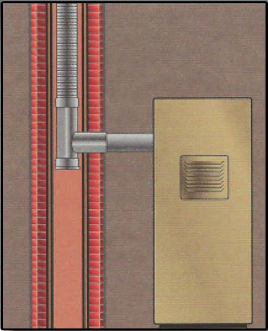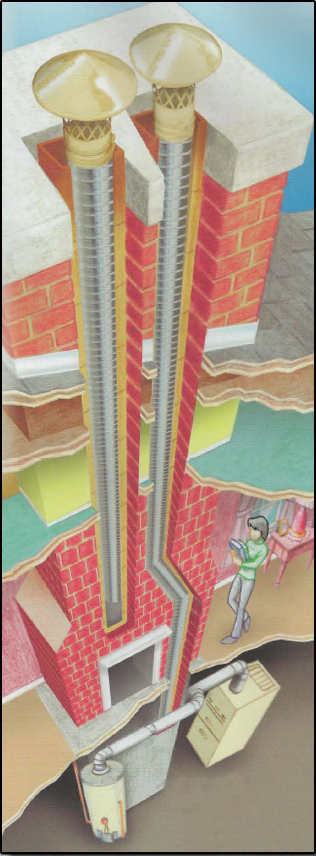
The modem, high-efficiency gas heating appliances are a fabulous engineering marvel. In the old days, Low-Efficiency gas heating appliances sent almost as much heat up the chimney as they put into your home. This pushed your utility bills sky-high and wasted precious natural resources.
Today’s high-efficiency gas heating appliances extract more heat during the burning process and send much less of it up the flue. But for all the benefits these furnaces offer, there’s one important side effect that must be dealt with – excessive moisture in the flue.
You see, water is a by-product of burning. In fact, when you bum one cubic foot of gas, you create two cubic feet of water vapor.
Those old, inefficient heating appliances sent so much heat up the flue that the water created in the combustion process stayed in the form of hot steam all way up and out the chimney.
New high-efficiency heating appliances don’t put as much heat into the flue. The problem is, the water vapor that’s created during burning now doesn’t have the draft power to push it up and out your flue.
So what happens? It condenses on the walls of your chimney, and unfortunately, no masonry chimney is designed to be constantly bathed with water, especially the acid-laden water found in your flue.

